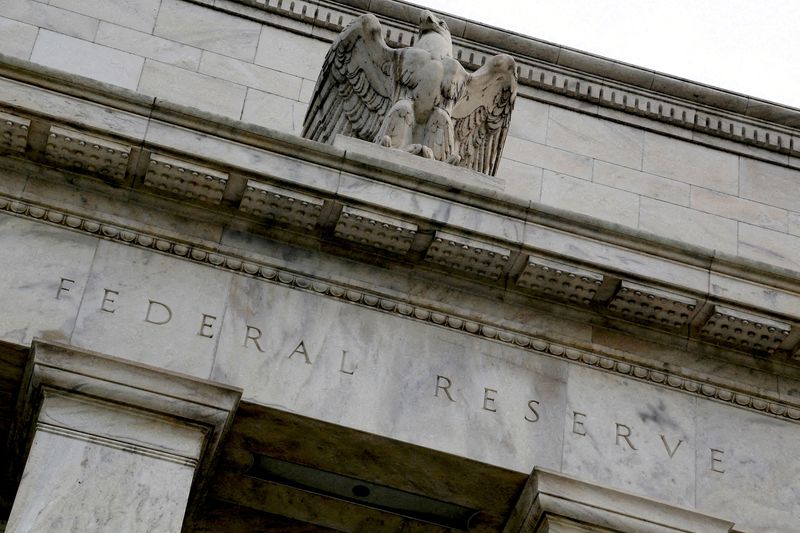Investing.com’s stocks of the week
By Howard Schneider
WASHINGTON (Reuters) - The U.S. Federal Reserve's 2020 move to put more weight on jobs in setting monetary policy "created more problems than it solved" as inflation surged and policymakers responded more slowly than they otherwise might have, economists including a former Fed vice chair said in research critical of that change.
"Many elements of the 2020 framework where well designed" to meet problems the Fed diagnosed from the years before the pandemic, Donald Kohn, Fed vice chair from 2006 to 2010 and now at the Brookings Institution's Hutchins Center on Fiscal and Monetary Policy, wrote in a paper authored with Brown University economics professor Gauti B. Eggertsson.
But, they concluded in research released on Tuesday, it also created "an inflationary bias," just as prices were about to surge.
The new operating principles were unveiled by Chair Jerome Powell in August 2020 after the onset of the coronavirus pandemic had triggered the loss of roughly 22 million jobs just months earlier. Among the critical changes, the Fed's policy actions would be guided by assessments of the "shortfalls of employment from its maximum level," rather than by "deviations" from that level.
By adopting such an "asymmetric" approach, which aimed to test the border of maximum employment rather than heading off inflation, the Fed's framework raised "a whole host of complications and biases that have yet to be properly understood," they said. "Our tentative conclusion is that on balance, the complication created by an asymmetric objective may have created more problems than it solved."
While policymakers eventually responded with aggressive rate increases, the authors wrote that "earlier recognition and response" to inflation would have allowed a more gradual adjustment "with potential benefits for financial stability" - a particular concern given recent bank failures.
Approval of the Fed's new framework followed years in which inflation had remained low, and central bankers decided they did not want to limit employment gains by preemptively acting to head off price increases they thought might start to build as labor markets became tighter.
After the new approach was adopted, Fed officials put it into practice by imposing strict tests for raising interest rates and slowing other pandemic-era stimulus. At the time, with inflation low and the unemployment rate high, policymakers were focused on ensuring the U.S. job market recovered fully from the pandemic.
The thrust of the paper's argument - that the strong forward guidance adopted by the Fed in 2020 hamstrung its eventual response to inflation - has been acknowledged by Fed officials including Powell.
The Fed has committed itself to review the framework every five years, and the paper argued that the aim should be an approach that encompasses "a wide range of possibilities, including some that haven’t confronted policy for some time."
